CS2 Guide for Beginners – 15 Effective Tips and Tricks
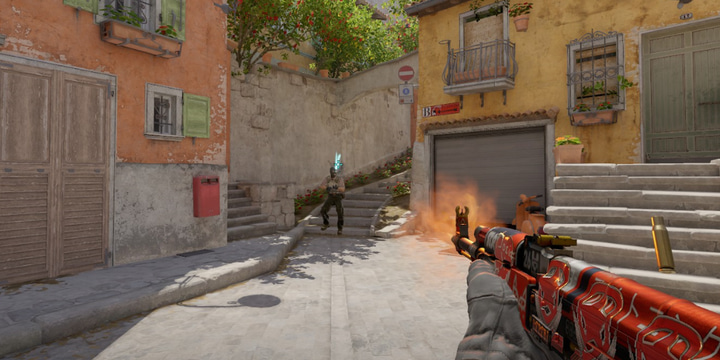
CS2 is a game that’s extremely easy to learn, yet takes a lifetime to master. If you’re completely new to the game, you’ll no doubt understand the rules of the game (plant bomb – defend bomb) rather quickly but you might even have trouble hitting your shots in the beginning. In our CS2 Guide for Beginners, we’ll teach you everything that you need to know to get started.
We don’t want to overwhelm players with information, so we’ve kept this guide limited to 15 tips that you can rather quickly apply to your own game. There’s a lot more to CS2 of course, and entire books can be written about this game and its extremely high skill ceiling, but we’ve identified the most common errors that we see low level players make. If you read and apply the information in this guide you’ll be on your way to ranking up in no time.
This guide is written for players who already know the basics (the rules, objectives, buying system, …) of the game.
Handy link: Counter-Strike 2 Patchnotes
1. Get your settings set up correctly
First things first: you need to make sure your game isn’t actively handicapping you, so before you dive into any competitive shooter you need to adjust the settings so that the game runs properly. This is the same for CS2.
HOW TO DO IT
Read our CS2 Best Settings & Options Guide to get up to speed immediately.
2. Learn how to counter-strafe and stand still when shooting
One crucial difference between CS2 and more casual shooters is the fact that your gun won’t be accurate if you’re running and gunning. In CS2, you have to stand still while shooting if you want to have any hopes of actually hitting your enemies.
This means that, once you encounter an enemy, you need to come to a complete standstill before you start shooting. Since it takes a little bit of time to come to a complete stop by just releasing the movement keys, more advanced players use a technique called counter-strafing in order to stand still faster.
HOW TO DO IT
Quite simply press the opposing movement key. For example, if you’re peeking an angle by holding D, let go of D, very quickly tap A (the opposing movement key) and release it instantly. This causes your character to counter the movement, which leads you to stand still a lot quicker.
As a consequence of the way movement works in CS2, it’s never a good idea to move diagonally when you’re expecting to encounter an enemy, as this means you would have to press two opposing keys at the same time in order to properly counter-strafe. This is obviously much more difficult than pressing just one key.
You can practice this by going into a practice server (under ‘Play‘ -> ‘Practice‘ – ‘Competitive‘ and then enabling Infinite Ammo and Infinite Warmup on the left side of the screen; this gets you into an empty server) or by simply playing deathmatch. Learning proper counter-strafing is an absolutely crucial aspect to becoming a great CS2 player, so it’s crucial that you learn this.
Each time you press an opposing movement key after releasing your original movement key, there is a (very) brief period of time where your character will stand still according to the game’s movement mechanics. More advanced players will use counter-strafing techniques during gunfights to make themselves harder to hit, so advanced players who appear to be stutter-stepping and moving erratically might just be employing counter-strafing in their movement routines.
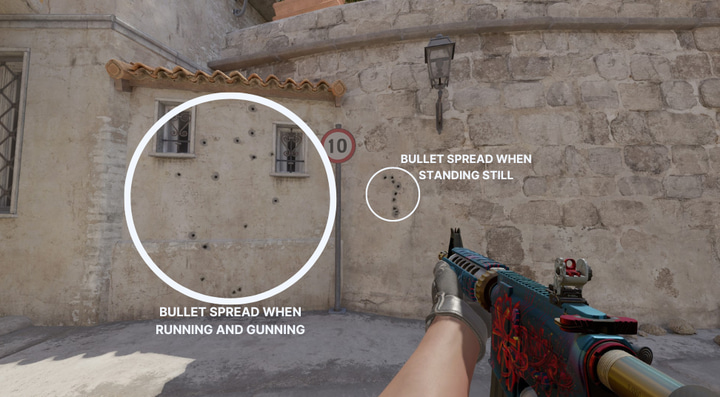
3. Learn the recoil patterns of the main guns
All guns in CS2 have their own recoil pattern. Once you start spraying, the gun will shoot away and your bullets won’t land exactly where your crosshair is. An example of this can be seen in the image above; the pattern of the bullets on the right is the beginning of the M4A4 spray pattern. If you want your bullets to stay centered, you need to counter the spray pattern of the gun you’re using with your mouse’s movements.
It’s extremely important to learn the spray patterns of at least the main rifles and ideally your favorite SMGs, otherwise you will be dead in the water every time a mid-close range fight emerges.
HOW TO DO IT
Spray patterns in CS2 are not random. There are tiny variations as to where the bullets will land exactly but spray patterns can be learned. There are a ton of images online of the spray patterns of the main guns, so a good idea is to put those images up on your second monitor (or a laptop, phone, or even print them out) and hop into a practice or deathmatch server to learn how to compensate.
4. Communicate with your teammates
Communication in CS2 is of crucial importance. This is a game where a single bullet to the dome can derail an entire round and send your team spiraling into a string of rounds with subpar buys, so it’s absolutely imperative that you speak up. Hopping into a serious CS2 match without a microphone should be considered a cardinal sin, so make sure you can be heard and that you speak up when it’s necessary.
HOW TO DO IT
Speak up. The most important things to call out are enemy positions and weapons, as well as sounds that might be of importance, but don’t be afraid to strategize with your team and come up with some tactics as well.
You can read our full guide on communication in CS2 to learn everything there is to know.
5. Learn maps and map callouts
As outlined above, communication and teamwork is crucial in CS2. If you have absolutely no idea where you’re going on a certain map, you probably shouldn’t be playing it in any serious competitive setting. It’s important to at least know the major map callouts so that you can effectively communicate with your teammates.
HOW TO DO IT
Open up an image with the map callouts on it and run around in the map in practice mode to get a feel for its overall layout. Once you’re somewhat familiar with the map, you can move on to playing other gamemodes, learning the callouts as you go.
Playing deathmatch is the best way to get a feel for the angles and approaches in maps due to the amount of engagements you will find yourself in.
Tip: Watching streams or professional matches can also be a great way to learn map callouts in CS2.
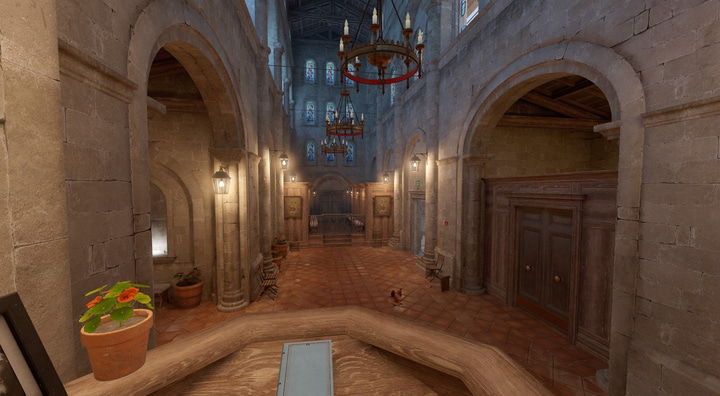
6. Buy and use (don’t waste!) utility
A lot of newer players underestimate the power of grenades (often called ‘utility’) in CS2. At the lowest ranks, a lot of players won’t even buy grenades at all, and that’s a big mistake. A well-placed molotov can absolutely shatter enemy pushes, and a nifty little popflash can net you a free kill. If you have the money, always buy utility.
Also don’t forget the age-old adage: don’t be a loser, buy a defuser. Unless you’re loaded with cash, you don’t all need to buy a defuse kit (you can pick them up if a teammate who has one dies; it looks like two utility pouches next to each other on the ground) but far too many rounds have been lost because of the fact that not a single CT player bought a kit.
HOW TO DO IT
Don’t be afraid to use your utility early on; throwing an HE grenade at the bottom of banana on Inferno is a very common way of taking map control as CT, for example. Sometimes this will damage an enemy, sometimes it won’t. Don’t always wait for the absolute perfect moment to throw your grenades, as this will more often than not cause you to just hold on to them. An HE grenade that chips away 10 damage is a lot more useful than an undetonated HE grenade that lies next to your dead body.
There’s also another side to this coin, though. Don’t just throw your utility willy-nilly. A lot of lower ranked players just kind of throw out their grenades at random during a (counter)push. At best, this is an annoyance to your teammates; at worst, your random molotov just blocked off your teammate from getting to the site in time.
Timing your grenades is crucial as well. Throwing a flash over two walls at the general direction of the enemy team at the start of the round might half-blind an enemy for half a second, but those grenades won’t do you much good in the long run, as your teammates will be too far away to capitalize on any advantage you might’ve gained from them and the enemy is just barely getting set up.
Learning how to effectively use your grenades in CS2 is a skillset all on its own, so there are no hard and fast rules to get better at utility usage, but just be mindful of the fact that you have utility, and use it responsibly. You can practice utility and lineups in a private server.
7. Learn one or two useful smokes per map
Smokes are the lifeblood of a successful CS2 round. No matter how you spin it: every half-decent player knows at least one or two basic smokes for every map in the active map pool, so if you want to become a reliable teammate, it’s a great idea to add some smokes to your arsenal. A well-placed smoke can make life a lot easier for your team.
HOW TO DO IT
There’s a big community on the internet dedicated to finding the latest and greatest grenade lineups, so simply looking up some basic guides on YouTube or other websites will get you very far. Finding and practicing smoke lineups can even be a very fun and engaging activity, and even if you only take a couple of minutes each day to learn and repeat smoke lineups you’ll have learned a lot of new ones after only a week. Your teammates will thank you.
To practice grenades yourself, boot up a practice map by navigating to ‘Play‘ -> ‘Practice‘ – ‘Competitive‘. Then select the map you want to practice on, and turn on Grenade Camera, Infinite Ammo, and Infinite Warmup. Read our full guide for more info.
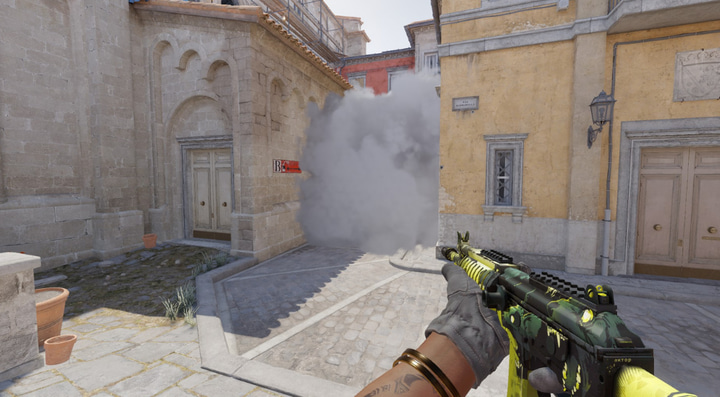
8. Mind your team’s economy and coordinate buys
CS2 matches are shorter than CS:GO matches. The first team to reach 13 rounds wins the whole thing, which means that economy management is arguably even more important than it ever has been. Don’t be that gamer who full buys when the team calls for an eco (an ‘eco round’ is a round where you buy next to nothing in order to save money for the following round) as this can absolutely ruin matches. It also makes you a bad team player.
HOW TO DO IT
Talk to your teammates. When money is tight, ask them what the plan is. At the start of every round, you can also see what your teammates have bought at the top of the screen (the weapon icons) as well as on the buy menu (the colored dots on the buy menu show what your teammates are currently holding) so there’s really no excuse to be going solo on this front.
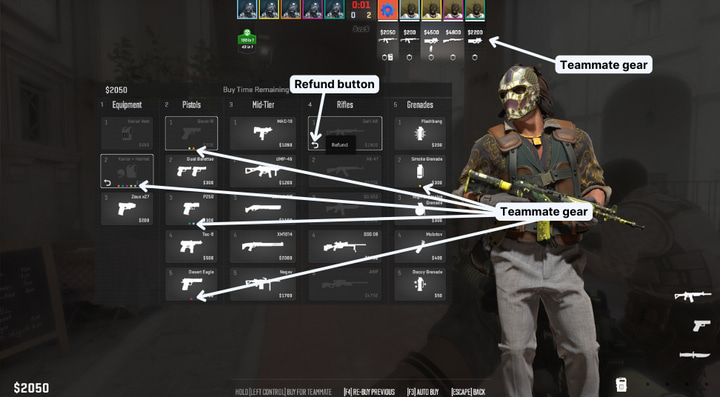
9. Learn how to refund weapons in CS2 when necessary
You can refund weapons in CS2. If you find that you’ve bought when your team wants to do an eco, or if you’ve just bought the wrong gun, you can always refund your purchase. You can refund anything in the buy menu, so this isn’t just limited to guns.
HOW TO DO IT
Press the refund button in the buy menu. Note that this does not work once you’ve dropped a weapon, nor does it work for weapons you’ve picked up.
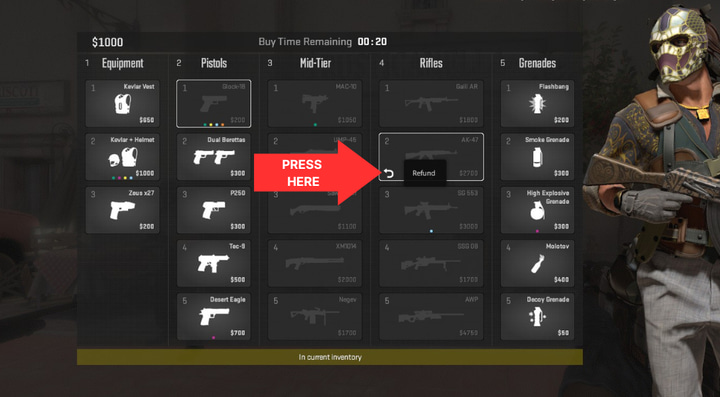
10. Don’t stand in the open; use your environment to your advantage
Lower ranked players seem to think that it’s all or nothing: you either fully commit to a peek and go way past the corner, or you don’t peek at all. Example: if you want to check mid on Inferno, you can just swing a little bit past the wall and then retreat. You don’t need to swing all the way to the middle of the opening. It’s the same when taking duels. If you’re engaging an enemy, it’s usually not a great idea to swing out so far that you don’t have a reliable way of getting back to cover should the need arise.
HOW TO DO IT
Be mindful of your surroundings. If you find yourself standing way out in the open, try to think about whether this is necessary or not. Are there better positions with more cover that you could play that would allow you to see the same angles?
Newer/lower ranked players can often be found standing or running in the middle of bombsites or just meters away from cover in general, and this makes them an extremely easy target. Once you get shot in CS2, your movement slows, and if you don’t have a reliable path to safety, this makes you a very easy kill, so be mindful of how you’re peeking and where you’re at on the map.
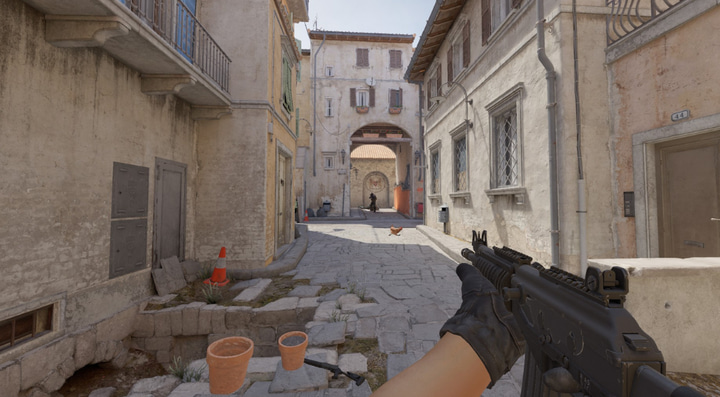
11. Don’t die for nothing
Once you die in CS2, the round is over for you. There are no respawns or revives so try to make sure that, if you die, it’s ‘worth something’.
HOW TO DO IT
This tip is a bit more vague, but try to think about what your death means to the team.
If you hear at least three pairs of footsteps rushing at you via banana on Inferno on a full buy round, is it really worth it to peek them by yourself without any backup utility, or would it be more worthwhile to fall back to try and defend the site with your teammates?
When you’ve planted the bomb in a 2v2 situation, is it really worth it to take that aim duel against a player who is miles away from the actual bomb, or would it be more worthwhile to smoke off the enemy’s approach and set up a crossfire with your teammate?
When you’re attacking and spread out in a 3v3 situation, is it really worth it to take a risky peek by yourself, or would it be more worthwhile to join up with your teammates first so that you can push together?
All of this is especially true when playing CT: even if you get one enemy with a risky peek before dying, odds are you’ve made the round a lot more difficult for your team to win since you’ve now left your teammate(s) with one less person to defend the site. After all, CTs have to spread out to cover both sides; Ts can just group up and attack. As such, a 1:1 trades almost always favors the Ts.
Of course you shouldn’t play scared: no one likes a baiter, and players who enter sites first and gather info for the team are extremely valuable to have, but don’t die for nothing either. Sometimes, staying alive is all you need to do.
12. Stop caring about (your) kills and deaths
CS2 is a team game. You win as a team and you lose as a team. The objective is to get 13 round wins, the objective isn’t to get the highest amount of kills or the best kill/death ratio. No one cares about your stats if all you do is shoot enemies in the back long after the rest of your team is dead, for example.
Entry fraggers (players who are the first ones to enter a site) usually don’t have amazing stats since they’re not really expected to get more than 1 kill, but they’re infinitely more valuable to a team than someone who is always chilling in spawn with an AWP, killing one or two CT rotators long after their teammates die trying to take a bombsite.
HOW TO DO IT
Realize it’s not the ‘you’ show. You’re part of a team, and you should facilitate your team every way you can. If you’re in a 3v3 post plant situation and you have a perfect crossfire set up, don’t be that guy who breaks the entire setup to go and hunt for some ‘easy kill’.
Also realize that not all contributions show up on the scoreboard; players who throw amazing smokes and block off entire sections of the map with their molotovs won’t get a lot of credit on the scoreboard, but they can be essential to winning a match.
Winning the match is the most important thing, so if getting to that goal means you have to sacrifice yourself a bit, then so be it.
Also read: What is ADR in CS2?
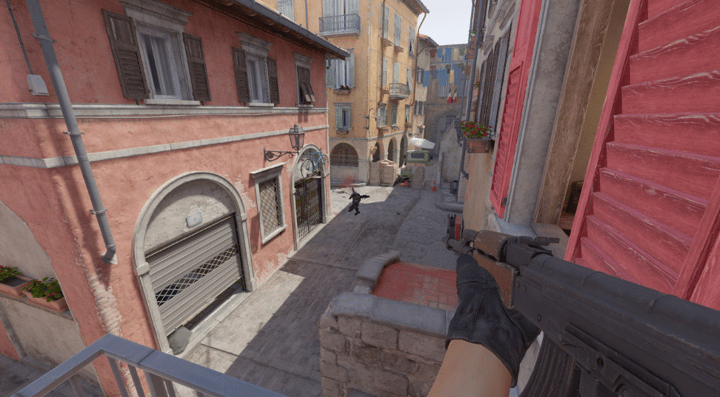
13. Don’t be too predictable
It can be tempting to settle into a routine. Maybe you’ve found a fantastic off-angle that always gets you a kill when you play it, or maybe you’ve just learned a cool new utility set piece to take control of a map section all by yourself. All of this is great, but don’t make the mistake of becoming too predictable. If you’re standing in the exact same position to throw your flash every single round, the enemy will catch on to that and will start prefiring or nading you, leading to preventable (and most of all: frustrating) deaths.
An extremely common sight in almost all ranks is a CT team that has found some success by pushing really hard and fast, after which the T site catches on to this and sets up a bunch of crossfires, decimating that predictable CT push.
HOW TO DO IT
Try to get into the minds of enemies. What would you think if you were them? Would you really fall for that off-angle for the third time, or would you molly it and then prefire it for good measure? Will they really not expect that P90 solo rush after you’ve done it four times?
Don’t get complacent; switch it up every now and then. If the enemy team has no idea where you’re going to be or what your next move is going to be, they’ll have a much harder time countering you and your team.
If you’ve been playing very passively as a CT and have been giving the enemy map control for free they might get complacent, causing them to be ill-prepared for that time you do go for map control. If you’ve mostly been playing it slow on T side, going for a super fast SMG rush might cause you to catch an enemy off-guard with a grenade still in their hands.
Of course you shouldn’t change it up just to change it up. If your team has been extremely successful playing a certain setup or strategy, then feel free to keep repeating that strategy (ideally with some minor variations) until it fails. Just don’t become too predictable or readable.
Switch it up. Don’t allow the enemy team to get comfortable.
14. Warm up before matches
Esports matches might not be as taxing on your body as real-world sports, but that doesn’t mean that the same principles don’t apply. If you’re planning on playing competitively, do yourself the favor of warming up a little bit before queueing up for that first real match.
HOW TO DO IT
Every player has a warmup routine of their own, so after a while you’ll probably have your own routine, but deathmatch is something that almost every player incorporates into their warmup routine to get the blood flowing. Consider playing a deathmatch or two (on community servers or official Valve servers) before getting into it.
After all, why wouldn’t you warm up? It hones your skills and allows you to skip that ‘cold period’ at the beginning of your first match where you’re not hitting all of your shots. There are only advantages.
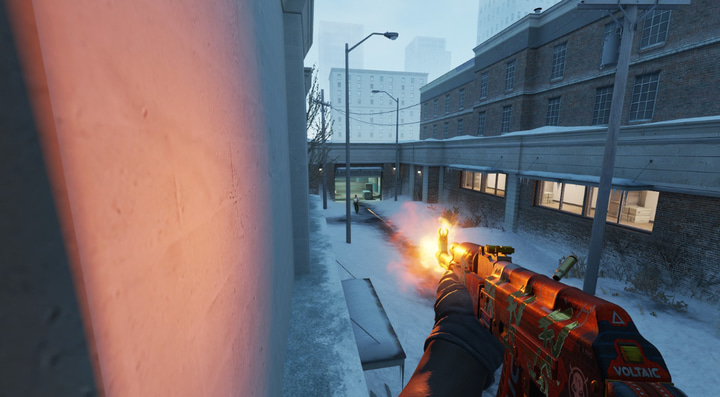
15. Be mindful of the bomb and your surroundings
One of the all-time ‘low rank classics’ is players dying with the bomb in unrecoverable spots. Going in first and trying to break open a bombsite for your team is commendable, but if you’ve got the bomb and no backup from your team and you get killed between a bunch of very difficult-to-clear angles then you might’ve just lost the round for your team before it even properly began.
Knowing when you’re carrying the bomb and behaving accordingly is very important.
In a broader sense, it’s important to be aware of your surroundings. New players often almost never look at their radar (or HUD in general) but there’s a ton of useful information there.
HOW TO DO IT
Zoom out your radar (the default radar is way too zoomed in) and you’ll immediately uncover a treasure trove of information. Every enemy that gets spotted by your team will show up on the radar, and the same goes for the bomb. You’re really doing yourself a disservice by not utilizing your radar, so look at it whenever it’s safe and you get the chance.
If you have the bomb, either drop it somewhere safe to pick up later (but not all the way back in spawn so that your team has to go on a big adventure once a site has been cleared) or give it to a teammate in case you’re planning on going for a risky push. If you hold on to the bomb, make sure to plant it as soon as it’s safe to do so. Never push too far when holding the bomb.
You can very easily tell when you have the bomb in CS2 (as you can see on the image below) so there’s really no excuse to consistently die in awkward spots while holding the bomb.
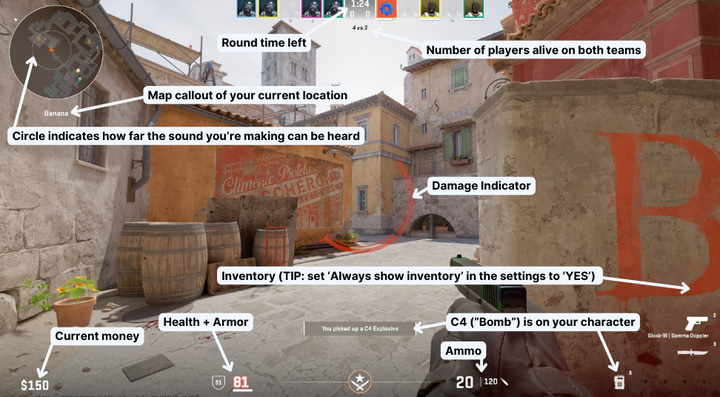
CS2 Guide for Beginners – Conclusion
CS2 is a very overwhelming game, and it can be hard to figure out which steps you need to take to get out of that ‘beginner’ level where so many players are. The tips above might not cover everything (but then again, no single article can cover everything there is to know about a game as deep as CS2) but, when applied correctly, will make you a much better Counter-Strike 2 player.
Rather than working on all these tips at the same time, use this CS2 guide to identify where you might be lacking, or work down the list as you play your daily/weekly games. Focusing on too much at the same time is never a good idea, so break this guide down into bite-sized chunks and you’ll see a ton of improvement in a very short period of time.
This is a very basic-level CS2 guide, but we have much more to come, so stay tuned for some more advanced guides in the future too!



Hello there Lars. Is the image at the top used in this tutorial copyrighted? I wondered if I could remix it with some text and effects for a Youtube channel that I am working on.
It’s not copyrighted, feel free to use it! If you refer to stats or stuff you’ve read on here, we do always appreciate a link though.